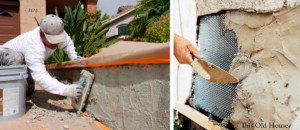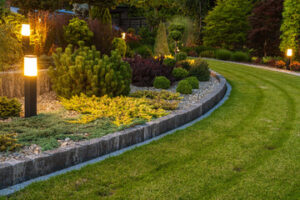Small drywall repairs, such as nail holes, are well within the capabilities of many homeowners. You will need a putty knife, hot water, sandpaper, or fine-grit steel wool and joint compound (also known as mud) for this repair.
When two pieces of drywall meet in a corner, they are protected by an L-shaped metal strip called a corner bead. This can become dented through everyday activities such as running into the wall with a vacuum cleaner or a child flinging a toy. Contact Drywall Repair Phoenix now!

When drywall is first installed, the seams between panels are filled with mud and covered with paper tape. Over time, the tape can pull away from the mud and create cracks along straight lines. If the cracks are small and only in the area where the tape pulled loose, this is a cosmetic issue that can be repaired easily by using drywall repair compound and sanding it to smooth it down.
Drywall cracks can also be caused by settling or other structural issues in the home. Having a local building inspector come out and check out the problem is a good idea. They will be able to tell you whether the cracks are due to normal house settling or if there is an underlying problem that needs to be addressed.
Cracks can also appear where two pieces of drywall meet or at joints with different materials. This can be caused by the movement of the house and shifting pressures on different parts of the structure. It can also be due to poor quality or improper installation of the drywall.
If the cracks are large, wide and jagged in shape it could indicate a structural issue in the house. It is important to get them fixed right away so that they don’t worsen and cause further damage.
A professional can use helical or push piers to fix the issue. They will be able to determine the cause of the cracking and find a solution that will work best for your home.
Hairline cracks are common in new homes and can often be a sign of a normal house settling process. However, if the cracks keep appearing and are getting wider or are at an angle, this may be a sign of a larger issue that will require a more extensive repair project.
Drywall cracks can be a big problem if not addressed quickly and correctly. Leaving them unattended can lead to moisture problems, mold growth, pests and higher energy bills. By having a local building inspector or drywall contractor examine the problem and repair it as soon as possible, you can avoid more expensive repairs in the future.
Holes
A hole in your wall is never a good thing, but it can be even worse when it leads to a water leak or pest infestation. Fortunately, most holes in drywall can be repaired fairly easily, especially for small ones from nail pops or pinholes. For these, spackling or joint compound can be applied to the patch and then smoothed with a putty knife and lightly sanded for a seamless finish.
Larger holes in drywall are typically caused by accidental damage or collisions with furniture, appliances, or other objects, but they can also be the result of incorrectly placed wiring or electrical work. It’s important to survey the extent of the damage in order to determine how best to proceed with repairs.
For a small hole, a self-adhesive patch can be placed over the hole and then covered with joint compound. Using the putty knife again, smooth the compound and feather the edges to help it blend in with the surrounding wall. Once sanded, the patch is ready for priming and painting.
Medium to larger holes require a different approach. To repair these, the damaged drywall is usually cut out and replaced with new drywall. It’s important to note that this type of drywall repair requires a skilled professional, as it can be difficult to ensure the new drywall is properly installed and that all the seams are sealed.
Other causes of drywall damage may include water damage from plumbing issues, which can lead to crumbling and rotting. Water damage can also be a result of roof leaks, and it’s important to address these issues promptly to avoid further problems. Another common issue is structural damage, which can be caused by shifting soil or foundation shifts that cause stress on drywall. This can result in cracks along window or corner frames as well as diagonal cracks across the walls. These types of issues can often be prevented by hiring a qualified home contractor and by taking steps to reduce the risk of foundation shifts, such as grading the yard. It is also a good idea to get regular inspections by a qualified inspector to identify and address any potential problems before they become a bigger issue.
Water Damage
When drywall experiences water damage it’s important to address it as quickly as possible to prevent further issues. The longer a wall stays wet, the more likely it is to warp and buckle. Additionally, moisture can lead to mold and mildew growth which presents a health hazard for you and your family.
There are many causes of drywall water damage, including natural disasters like flooding or hurricanes, burst pipes, condensation from an air conditioner, sink overflow, and more. It’s a good idea to do a visual inspection of your drywall on a regular basis to ensure nothing is wrong and catch small issues before they become serious problems.
If you do spot water damage, the first step is to identify and address the source of the issue before moving on to drywall repair. If it’s a result of flooding or severe weather, then you’ll need to wait for the waters to recede. If the water is coming from a leak or a burst pipe, you’ll need to fix that issue as soon as possible before the damage worsens.
Before starting any drywall repairs, put down drop cloths or tarps to catch the debris, dust and drywall pieces created while completing the work. This will also help to protect surrounding surfaces from any sanding or painting that may occur during the process.
Once you have removed any damaged drywall, make sure to wash down the affected area with soap and hot water to remove any remaining moisture. This will help prevent the formation of mold or mildew.
Next, you’ll need to cut a square out of the damaged area using a utility knife, taking care not to damage any adjacent drywall. You can then place a patch over the hole, using a drywall patch kit if needed. It’s important to use a patch kit designed for drywall as opposed to paper patch kits which are not intended to be used on wet surfaces.
Once the patch is in place, you’ll need to sand it smooth and apply joint compound. After the compound dries, you can paint over it to match your existing color.
Mold
When drywall has been exposed to water damage, mold can form. This is not only unsightly, but it can also cause a number of health issues for those who live in the home. Mold is particularly dangerous for those with respiratory problems, such as asthma. It can also be harmful for infants, elderly adults, and those with compromised immune systems. Therefore, it’s important to address any signs of mold on drywall as soon as possible.
If you’re fortunate enough to discover mold on painted drywall early, you may be able to scrub it clean with a natural cleaning solution such as baking soda or, in severe cases, a store-bought chemical solution like bleach or Concrobium Mold Control spray. Before you begin cleaning, though, be sure to ventilate the room. You’ll want to open all doors and windows to prevent the spread of toxic fumes throughout your house. Once you’ve begun, proceed slowly and carefully to avoid damaging the paint or causing further damage to the underlying drywall.
Once you’ve sanitized the affected area, it’s essential to dry the area thoroughly. Otherwise, mold will return and continue to grow. You can use a fan pointed at the wall on full blast to speed up the process, or you can take more time and work with a dehumidifier in areas where moisture is most prevalent (bathrooms, kitchens, basements).
The best way to prevent mold in the first place is by addressing any leaks as soon as they occur. This is crucial because the longer water sits on surfaces, the more likely it is that drywall will become contaminated with mold.
If you suspect that you have a drywall problem, shut off power to the affected area at the electric service panel. Use a stud finder to locate wooden support behind the wall and mark off an area with a pencil that’s at least two feet larger than the area of mold you can see. Using a utility knife, cut along the pencil line. Be careful not to agitate the mold spores as you cut; this could cause them to become airborne.







